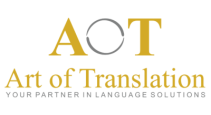Many of us have watched Squid Games, the famous Korean series that hit Netflix’s number 1 spot in 90 countries.
Despite its amazing success, you probably heard about the controversy around the English translation of the subtitles. It seems that many Korean-language speakers didn’t agree with the translation they saw in English.
Thinking about it, it raises many questions about translation. Native speakers may feel mislead or deceived. The product may be genius. But the globalization process may have lost part of the original intent.
Why put all this hard work in a fantastic product if we can’t share it with the world? Because it’s a fact we can’t deny. We live in a global world. And without translating our messages, how can we reach people that speak a different language than us?
The first step may be to define what translation means. It’ll help us understand better why it’s important. It will also shed some light on the role and value of professional translation services for your business, your outreach, and your reputation.

What is translation?
According to Merriam-Webster dictionary, translation is “an act, process or instance of translating”, “a rendering from one language into another”. Translate is a transitive verb, and it means: “to turn [a language] into one’s own or another language”.
We can also define translation in a more conceptual way as a mean to convey meaning from one language to another. This concept implies that no translation can fully replicate the source language because there is no absolute correspondence between languages.
So, translating is the process and act of communicating content and meaning from one language (the source language) to another (target language). But the reality is often more complex than a definition. Let’s dive a bit deeper in the translation’s world.
Types of translation
Let’s quickly review the 5 main types of translation you may come across or need one day:
- Literary Translation: As its name suggests it, this field is about translating literary work such as publications, novels, poems, plays. One of the hardest types of translation, as the understanding of the context and culture is critical.
- Professional Translation: Any translation used for professional services could fit in this category. It generally requires a translation highly accurate of the information contained in the source document. Medical and legal translations are the most common examples of this type of translation. Precision and deep knowledge of the field are crucial for these types of translation.
- Technical Translation: it’s about translating technical documents, such as scientific or technological data, manuals, engineering documents. Expertise of the industry is a must-have because it requires precise translation of complex information. Sometimes, it includes the formatting and the images too. Coding is a great example of content that falls in this type of translation.
- Commercial Translation: We sometimes refer to is as administrative translation. It’s for management documents of organization, corporate or regional business. It could include memo, contractor documents, supply chain notice, human resources presentation, etc. Financial documents could require a professional type of translation, depending on the level of expertise required, but not all of them.
- Creative Translation: Marketing and content creation are the two major fields using this type of translation (blog, e-learning, newsletters, website). The aim is to convert the content in the target language in a creative way. Idioms, expressions, and even sometimes the structure, are adapted to better relate to the local culture. But the final translation should stay relatively closed to your original message. Creativity and knowledge of the culture are essential to reach the target!
Transcreation and Localization
Transcreation and localization are two words we hear more and more in our globalized world. However, it’s important to clarify that even if they involve at some degree some translation, they are different processes:
- Transcreation: the aim of this service is also to convey a message and a concept from one language to another. However, transcreators are copywriters. A creative brief explains the creative concept, and the action the message shall trigger in the target audience. It results in the creation of new content targeted to the local audience while still capturing the brand voice and the original message of the brand.
- Localization: it is the entire process of adapting a product, service or content to a local market or region. Translation and transcreation are often part of it. But, localization includes a lot more aspects to resonate with the users. It looks after a variety of elements, such as tone, imagery and color, user interface, symbols, payment method, etc. McDonald and Coca-Cola are famous examples of companies that localized their processes, from marketing to recipes.
Not all companies will require these services. It just helps to get a global overview of the different “branches” of translation to get a better idea of its scope. And why translation is a cornerstone of a multicultural world since centuries.
Why is translating important?
Translation can have a multidimensional impact. It’s an art form that shall not be underappreciated.
Imagine you just bought a comfy chair. You’re already looking forward to sitting down with a glass of red wine and finishing this book you’re reading. Back home, you open the box, and the instructions are in Greek. Well, you only speak English! It seems that you won’t get to know the end of the story in that chair tonight.
Nowadays, translations are pretty much involved everywhere. The chair was made in another country. But, the wine may come from France. And the book may be written by a Spanish author.

Global World
With Internet, social networks, instant messages’ app, our world became interconnected in ways that we don’t even know. On top of all these new means of communication, and of the technologies enabling it, tourism and transport have helped us move around the world. And access regions our grandparents probably didn’t even think of.
Organization and movement are also following the same trend. As virtual and physical connections are getting easier and more affordable, they can expand their outreach well beyond the borders of the country they’re from. But, for that, communication is key.
If people don’t understand what you mean, they won’t relate to you. Not everybody speaks English. That’s when translation comes into play. You can convert your message into the language of your audience, create a common understanding and have an impact!
In a survey done by Common Sense Advisory, 75%* of respondents will choose a product with information in their language when they have the choice between similar products. That speaks for itself.
If you sometimes go on vacation in another country, you may relate. How do you feel when the websites of the places you’re looking at are in your mother tongue? Would you tend to choose the ones that offer a version of its website in your language?
Global Economy
Take your phone. The design may have been done in America. The raw materials may come from mines in Africa. It may have been assembled in a factory in Asia and the marketing campaign developed in Europe. Now, it’s sold everywhere in a world. We can call it a globalized product.
But, the company behind it need to implement many processes to create and produce this phone we use every day. For example, design teams need to coordinate with the supply chain services and the production line. Same with the marketing and sales team. The production manager may have to reorganize the delivery of raw materials. Any delay will impact the whole organization, up to the sales team. And so on.
If the factory doesn’t understand the instructions of the design team, the final product may not be functional. Or it may not offer the function the marketing team is going to promote in their campaign. Details matter. And translation is key for all processes to run smoothly.
Significance of Translation
We cannot understate the importance of translation. Languages are inherent to cultures and to people, and translation is a bridge that connects all of us.
An automated software may help. But it may not capture the nuance of your prospect’s culture. You need to define which translation process will support your strategy and help you reach your audience. And the audience can be as multicultural as the world is.
Translation is an important component of the success of companies working with vendors and clients from all over the world. Defining your translation strategy will have a long-term impact on your growth and reputation.
That’s why language professional services are essential. They help you define a translation strategy aligned with your goals. Plus, they will support you through the whole process to ensure your success.
AOT is a professional language services provider, fully insured. We are not just a provider, we’re your partner in language solutions. Our goal is your success! Contact us.
Sources
https://www.merriam-webster.com/dictionary/translation
https://www.bannerflow.com/blog/the-truth-about-translation-its-more-important-than-you-know/
